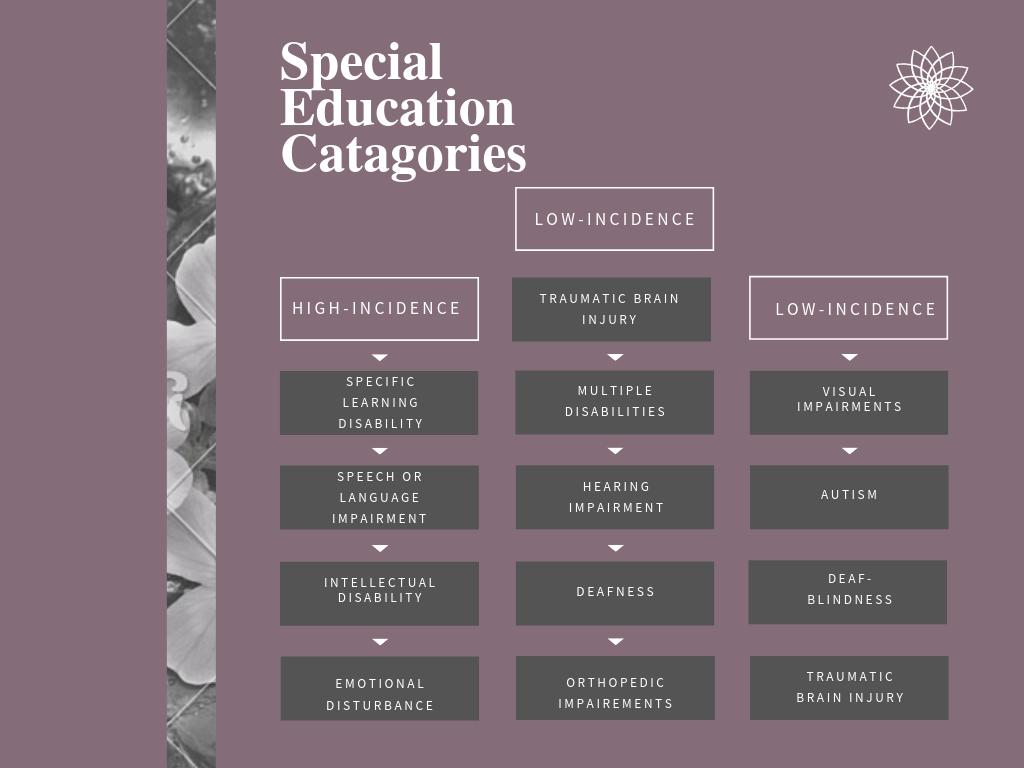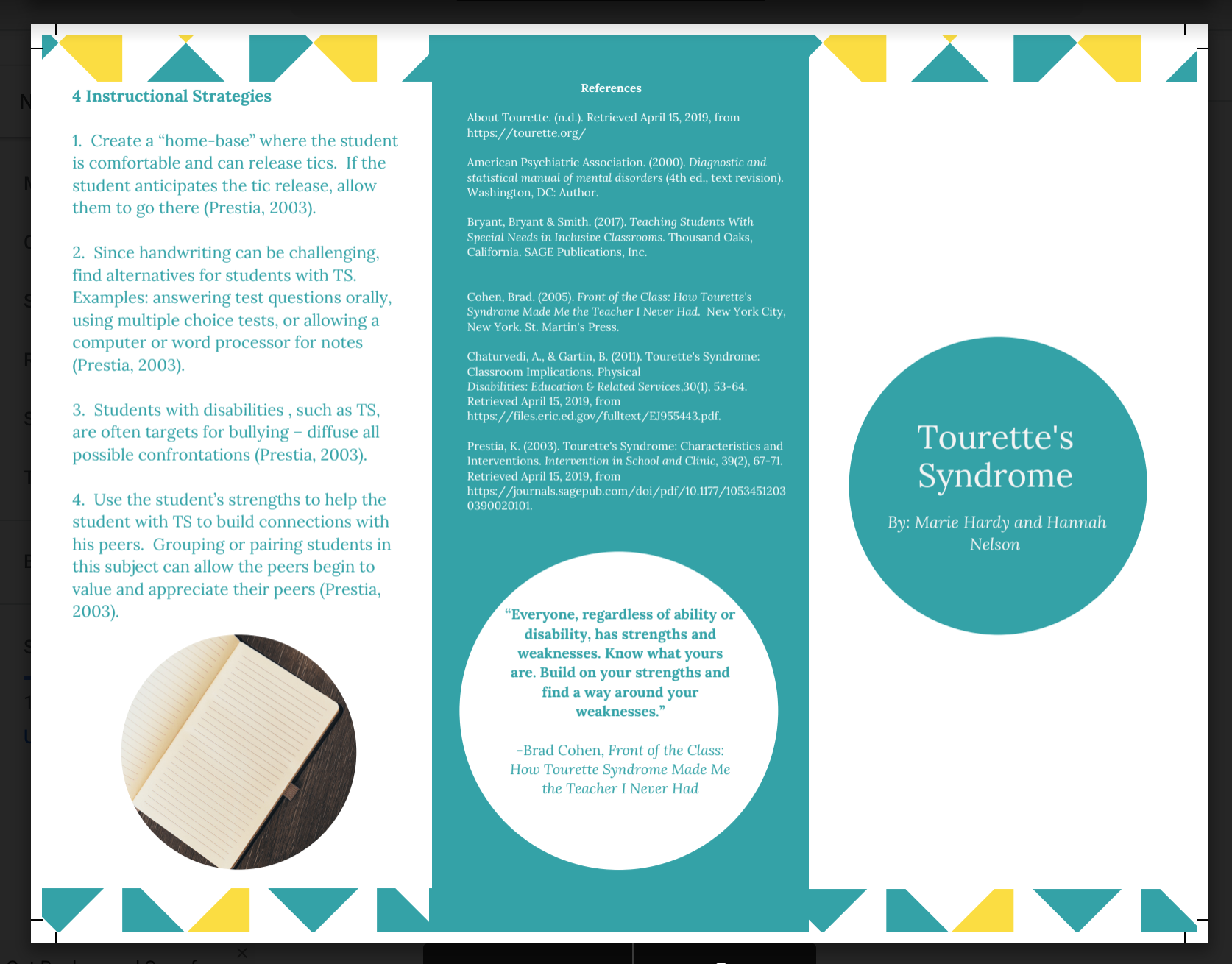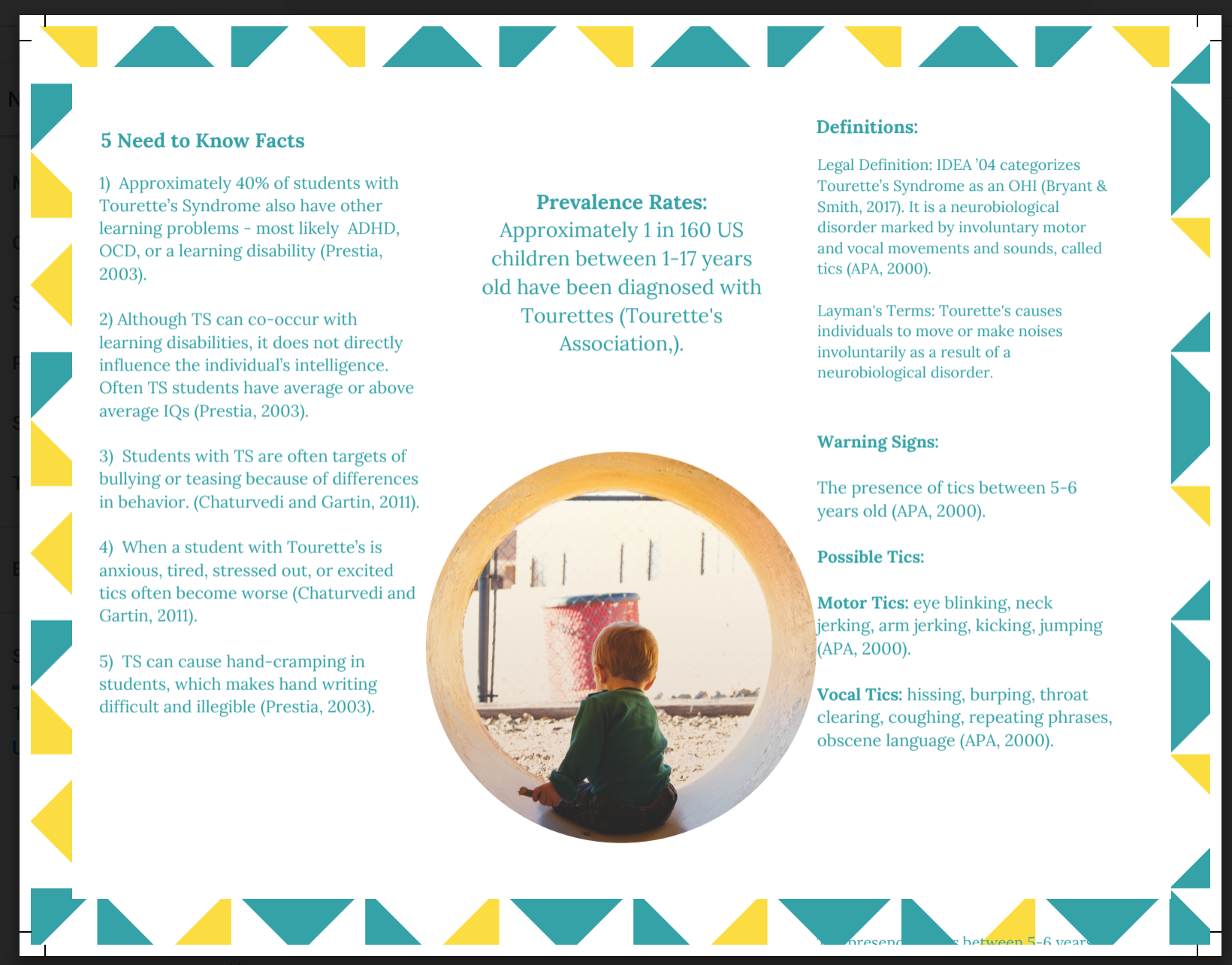Categories of Disabilities (1)
What are the types of disabilities that educators may encounter in a classroom?

IDEA '04 defines thirteen to fourteen (including developmental delay) disabilities which can be categorized into high and low incidence disabilities (Bryant, Bryant & Smith, 2017).
Tourette's Syndrome...
is an OHI. Below is a flyer which gives more details on it's characteristics, diagnosis, and how to teach students with TS.


My Artifacts:
- Special Education Category Poster (new)
- Tourette's Handout (old)
Other Artifacts:
- Youtube Video (see references)
Reflection
While making the brochure for Tourette's Syndrome, I reflected on what misconceptions may I make about these students, what could be most challenging for them in school, and what teaching strategies could be effective in meeting these challenges. Some common difficulties were involuntary tics, bullying, and difficulty in handwriting. As a teacher, there are ways to ease these challenges. I could try to build connections between students and diffuse problems. I could also discuss a way for the student to go to a private space to relieve tics. Creating this artifact made me thoroughly reflect on these before teaching a student with Tourette's.
Outside of Tourette's & OHI's, there are thirteen other categories of disabilities, four of which happen more often. While not delving as deeply into all of these, reading the textbook, creating the poster and watching the video gave me a broad introduction to the characteristics, causes, and prevalence of these disabilities. Furthermore, hearing PK presentations from my classmates also helped me understand teaching strategies for students with disabilities. For example, being familiar with IEPs can assist students with learning disabilities - as they often struggle with a specific subject such as reading or mathematics. Creating a solid behavioral intervention plan is important when teaching a student with Emotional Disturbance. Creating the page for this competency helped me understand the different categories of disabilities and the importance of knowing their characteristics, common misconceptions, and challenges in the classroom before teaching these students.
References
Bryant, D., Bryant, B., & Smith, D. (2017). Teaching Students With Special Needs in Inclusive
Classrooms. Thousand Oaks, CA: Sage Publications.
Teachings in Education. (2018, April 7). Students with Disabilities: Special Education Categories. [video
file]. Retrieved from https://www.youtube.com/watch?v=cFtg2xub10E&t=433s